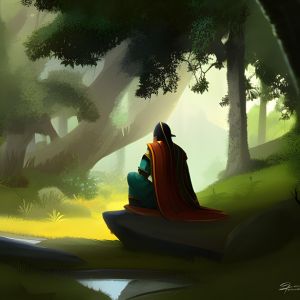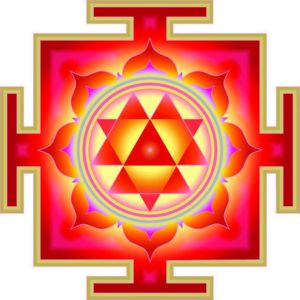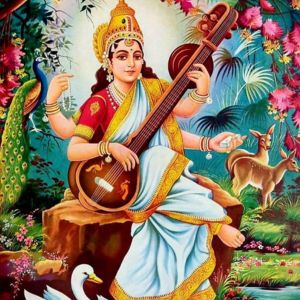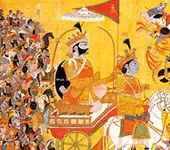This discourse tells you- 1. How Mahabharata teaches us the principles of life. 2. How the purpose of life is knowledge.
Comments
Transcript
(Click here to read more)
Why Kurukshetra? We saw this. Why did the battle take place at Kurukshetra? Kurukshetra is a punyabhumi. Earlier at the beginning of Dwapara yuga also Parashurama had wiped out evil by exterminating several generations of Kshatriyas who had no shame in committing atrocities such as stealing and killing noble saints. Parashurama created five lakes of blood in Kurukshetra which later became punya tirthas. Hence the name Samantha Panchakam. Kurukshetra is also known as Samantha Panchakam. Samantha because 18 ....
Transcript
(Click here)
Why Kurukshetra?
We saw this.
Why did the battle take place at Kurukshetra?
Kurukshetra is a punyabhumi.
Earlier at the beginning of Dwapara yuga also Parashurama had wiped out evil by exterminating several generations of Kshatriyas who had no shame in committing atrocities such as stealing and killing noble saints.
Parashurama created five lakes of blood in Kurukshetra which later became punya tirthas.
Hence the name Samantha Panchakam.
Kurukshetra is also known as Samantha Panchakam.
Samantha because 18 akshauhinis of sena perished here.
One akshauhini has about 1.1 million foot soldiers in addition to horses, elephants, chariots.
Ugrashrva the narrator goes on to tell the Rishis that this is all done by Kala, Time.
Evil acts of Kauravas were just a nimitta.
Bheeshma fought for ten days, Drona for five, Karna for two days, Shalya for half a day.
After this the gada-yudha between Duryodhana and Bhimasena took place.
On the eve of that day only Ashwathama, Kritavarma, and Kripacharya killed the whole of Yudhishthira's army which was in deep sleep, deceptively.
This is not yuddha dharma.
To kill someone who is sleeping.
That’s what they did.
In Janamejaya's sarpa yajna, Mahabharata was narrated by Vaisampayana.
Vaisampayana is the direct disciple of sage Vyasa.
Lomaharshana Suta is also a direct disciple of Vyasa Maharshi.
Lomharshana’s son is Ugrashrava who is the narrator of Mahabharata in Naimisharanya.
The venue of Vaisampayana's narration is Janamejaya's Sarpa yajna.
This is naimisharanya.
So, it is obvious that Vaisampayana's narration took place before Ugrashrva’s narration because Ugrashrava is referring to Vaisampayana's narration here.
He is going to say the same here.
Narrate the same here.
Mahabharatam starts with Pausha, Pauloma and Astika Parvas.
Why is he referring to these three Parvas here?
There is a reason.
There are a hundred Parvas in Mahabharata.
Why is he referring to three Parvas here?
Why not just one?
These are things you won't understand from the Mahabharata serial.
These gudarthas, serials or movies will not be able to reveal.
They don’t go into such depth.
They can't go into such depth.
What is the essence of these three parvas?
Paushya- guru shushrusha
Pauloma- the greatness of gurus
Astika- how Jaratkaru did not want to get into the ashrama of the householder and eventually he did.
Yajnas are there only for the householder.
Karma is there only for the householder.
The importance of karma, action is pointed out here.
विविदिषन्ति यज्ञेन – yajnas are also for knowledge only.
Karma is also for knowledge.
Karma when rightly performed gives knowledge.
Karma is not inferior.
Don’t think Karma-kanda is inferior and Jnana-kanda is superior.
The importance of guru and karma are highlighted here.
These are points worth remembering says, Ugrashrava.
By mentioning the three parvas this is what he intends to convey.
Ugrashrava says: those who are desirous of moksha resort to vairagya.
In the same way, those who are desirous of knowledge resort to Mahabharata.
What is it that is foremost among those which should be known?
Atma.
What is dearest to anyone?
One’s own life.
This Itihasa Mahabharata is also so important, so useful.
Even for writers, authors, without depending on Mahabharata you just can’t write anything.
Anything that you want to write, you even imagine, is already there in Mahabharata. Each and every situation is there in Mahabharata.
There is nothing that Vyasa has not written about in Mahabharata.
Every poet, every writer afterward has depended on Bharata as their source.
Don’t think this is about India, Indian writers.
Every single theme that can be written anywhere in the world, you will find them all in Mahabharata in one form or the other.
This is the greatness of Mahabharata.
It is not just a battle story.
Every conceivable situation is already covered in Mahabharata.
Every single tatwa, the deepest, most subtle tatwa, they are all explained in Bharata, covered in Bharata.
And it is completely in line with Vedic principles.
There is absolutely no deviation from Vedic principles.
Every single principle explained in Mahabharata has the authority of the Vedas.
A brief about what are the contents of the various Parvas is given hereafter.
Two parvas we have already seen, Anukramanika Parva and Parva Sangraha Parva.
We are presently at Parva sangraha Parva.
Contents of the next three: Paushya, Pauloma, and Astika also we have seen.
That makes it five.
The Sixth Parva, Amashavatarana Parva describes how divinities take amshavataras on earth.
The Seventh, Sambahva Parva, the famous story of Dushyanta and Shakuntala is part of Sambhava Parva.
Also, there is an assertion that spiritual progress does not happen naturally, by default.
It happens through karma, by hard work.
The Eighth, Jatugriha Parva shows that people are even capable of killing own relatives for money, out of greed.
The Ninth, Hidimba Parva shows how lust can make one commit crimes.
Like this, every Parva has a theme.
We will see them as we proceed.
Mahabharata is a sastra, the contents of Mahabharata are teachings.
They are to be understood and learned.
Mahabharata is a narration of incidents of the past.
The purpose of the narration is that we should learn from them.
When you look at it that way, every single incident that happens around you, not just the past, even today, in your daily day-to-day life, they are being enacted to teach us something.
That is what Vyasa did.
He gathered incidents of the past and presented them to us in the correct perspective, telling us how we should look at them and learn from them.
When you see this, this way then the statement that the purpose of life is to learn is well justified.
The purpose of life is to acquire jnana and progress.
This is well justified, not to eat, drink and sleep.
The rest of this section mostly serves as the content page of a book.
We will go ahead and start with the paushya Parva next.
Recommended for you
Why Bhartruhari Relinquished His Throne

Discover the fascinating story of Bhartruhari, the king who gave up his throne for spiritual enlightenment. Find out why he made this life-changing de....
Click here to know more..Mantra For Protection From Evil Forces

ईशानां त्वा भेषजानामुज्जेष आ रभामहे । चक्रे सहस्रवीर्य�....
Click here to know more..Sharada Stuti

achalaam suravaradaa chirasukhadaam janajayadaam . vimalaam padanipunaam paragunadaam priyadivijaam .....
Click here to know more..
English Topics
Mahabharatam
Click on any topic to open
- 96 Two Curses That Worked against Karna
- 95 What is behind Calling the Five Brothers the Pandavas
- 94 Give up an Individual IF....
- 93 Fascinating Birth Story of the Kauravas
- 92 Overcoming Grief - Lessons from King Senajit's story
- 91 Yayati's Wisdom
- 90 Yayati's Story
- 89 Brahmacharis Can Bless And Curse
- 88 Human Nature - Comples Mix Of Good And Bad
- 87 Results Of Good Karma
Please wait while the audio list loads..
30
Ganapathy
Shiva
Hanuman
Devi
Vishnu Sahasranama
Mahabharatam
Practical Wisdom
Yoga Vasishta
Vedas
Rituals
Rare Topics
Devi Mahatmyam
Glory of Venkatesha
Shani Mahatmya
Story of Sri Yantra
Rudram Explained
Atharva Sheersha
Sri Suktam
Kathopanishad
Ramayana
Mystique
Mantra Shastra
Bharat Matha
Bhagavatam
Astrology
Temples
Spiritual books
Purana Stories
Festivals
Sages and Saints
